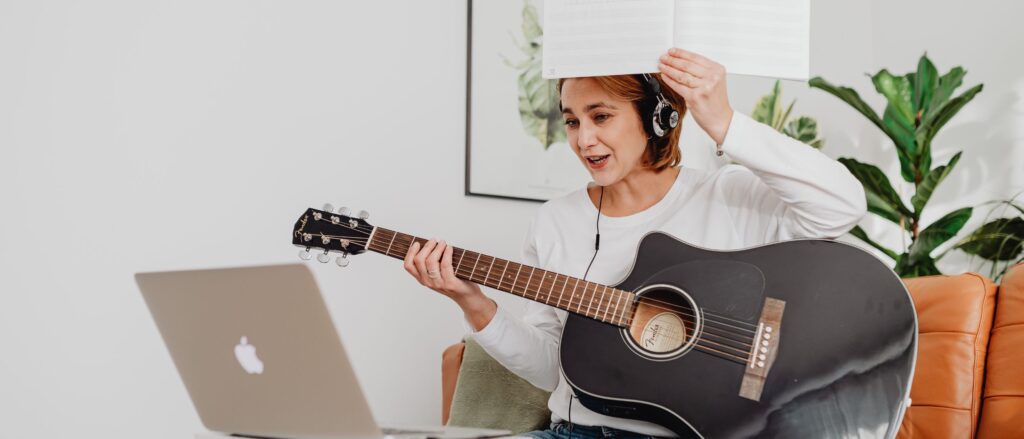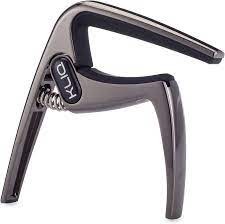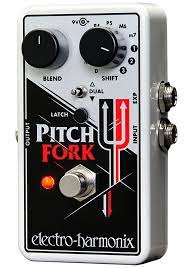To transpose is to take a musical piece and change its pitch, up or down (=higher or lower). It means that the notes move, but the relationships between them stay the same, thus keeping the same melody. The two most common reasons to transpose a piece are:
- To fit a singer’s vocal range. Helping the vocalist feel comfortable with a melody is the main reason for transposing.
- To make the song easier to play. If your song has challenging chords, transposing it will often reveal easier chords. The scary chord progression Bbm Dbm Abm Ebm, when transposed half a step down, becomes the beginner-friendly progression Am C G Dm.
Here are five common ways to transpose a musical piece:

Method #1 – use the built-in transpose button on the app/site you are using
If you are using a chords site/app that offers this option, the easiest way to transpose is to use the transpose feature built into the app. Look for the transpose button, and start playing with the + (transpose up) and – (transpose down). If the site requires a premium membership to use the transpose feature, try to find another site – many sites offer this feature for free, and unless the song you are trying to play is very niche, you will likely find it on different sites. If when transposing you are unable to find chords that you feel comfortable playing (i.e., the transposed chords remain hard no matter which key you try), perhaps the song is too hard for you at this point.
Method #2 – use a guitar capo
This tip is guitar specific – use a capo (well, you could use a capo on bass too). A capo is a neat device that transposes your instrument up. You can buy it in any music instrument store, order it online (here is a highly-rated capo you can get on Amazon), or make it yourself using a pencil and a rubber band (here is a YouTube video on how to do it). The capo is like a bridge, you place it across any of the frets on the guitar, and by making strings shorter, it gets the pitch up. Note that there are different capos for Spanish (classical) guitars and acoustic guitars. The acoustic guitar capos can mostly be used on electric guitars too.
Method #3 – change your guitar’s tuning.
You can tune your guitar to a tuning different than the standard tuning, for example, an entire semitone or tone up or down. Different guitars vary by how much they can stand variations in tuning, most guitars you will come across are built for standard tuning and perhaps can stand one tone above or below (a higher variation in tuning can be achieved if you use different gauge strings, but that’s for another post. In short, if you try to tune your guitars much higher than standard without replacing the strings with thinner strings, you risk guitar neck pressure cracks. If you loosen the strings too much to get a lower pitch, you will get string buzzing, and at some point they will be too loose and you wouldn’t be able to play at all). At a more advanced stage, you might come across alternate tunings which don’t keep the standard relationship between the string pitches, (= they are not transpositions of standard tuning), but that is a whole different topic.
Method #4 – use a pitch-shift pedal.
There are devices, for example my beloved pitchfork pedal that can transpose the signal that comes out of a guitar. These pedals let you run the guitar signal through them before it reaches the amplifier, transposing the sounds to the desired pitch. For example, let’s say you want to play along with your favorite band and they have their guitars tuned to C# standard. Instead of lowering all your guitar strings to fit C# standard, you can simply plug into the pedal, set it to 3 semitones down, and play the song as if it was in standard tuning.
Note: these pedals are only good for electric guitars. If you use them with an acoustic guitar, you will hear both the transposed sound coming out of the amplifier, and the non-transposed sound coming directly from the guitar’s soundhole. In most pitches, it will sound pretty bad and confusing (unless you are deliberately using it as an artistic effect).
Just like when using a pitch shift pedal, pitch transformation can be achieved with an audio interface and a DAW software (digital audio workstation) on your computer, but that is more advanced and requires a strong computer to transpose what you play live with minimal latency to sound like the transposition happens in real-time.
Method #5 – transpose in your head
And then, there are those musicians who are experienced enough to transpose notes and chords in their heads. They can look at a song chart with chords in the key of Am, and play it in the key or F#m (for example if asked to do so by a singer). This is a neat skill to have and is quite useful in jam sessions, but it is a more advanced ability and if you are just starting out, I don’t recommend putting your energy into trying to learn to do this. If you persevere with music, one day you will wake up and realize that you can transpose in your head, without ever deliberately practicing!
Fueatured photo by Karolina Grabowska

